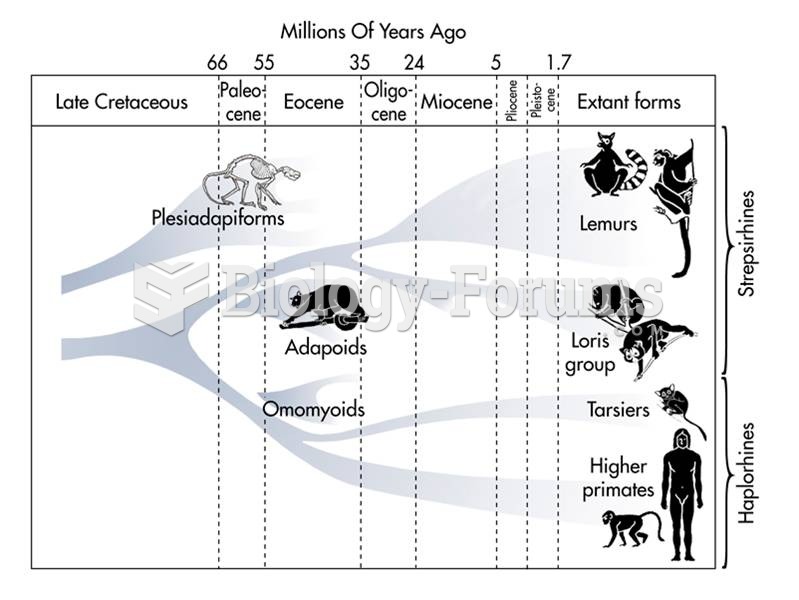|
|
|
Did you know?
Many of the drugs used by neuroscientists are derived from toxic plants and venomous animals (such as snakes, spiders, snails, and puffer fish).
Did you know?
Cyanide works by making the human body unable to use oxygen.
Did you know?
There are more sensory neurons in the tongue than in any other part of the body.
Did you know?
All adverse reactions are commonly charted in red ink in the patient's record and usually are noted on the front of the chart. Failure to follow correct documentation procedures may result in malpractice lawsuits.
Did you know?
The ratio of hydrogen atoms to oxygen in water (H2O) is 2:1.







